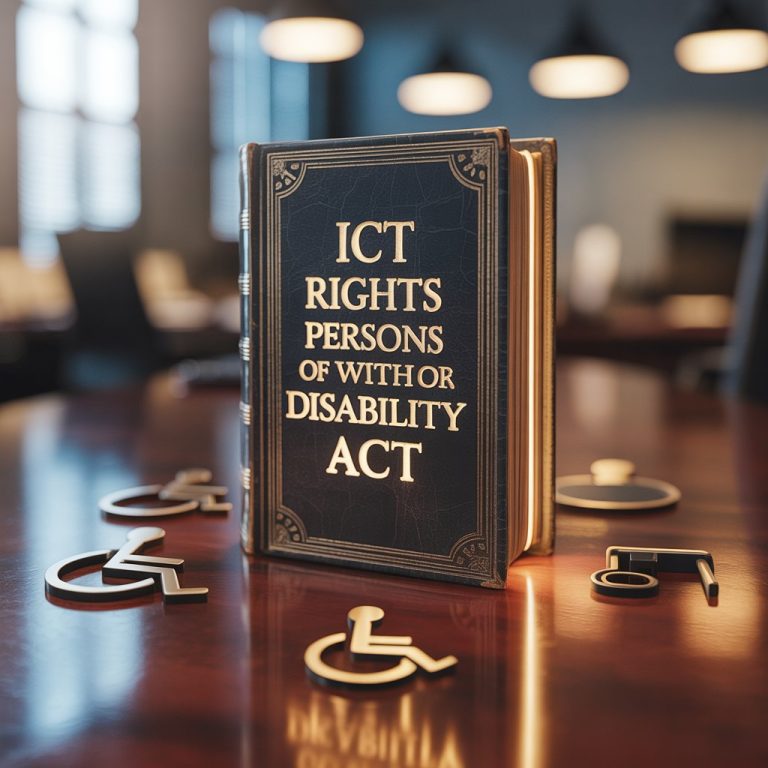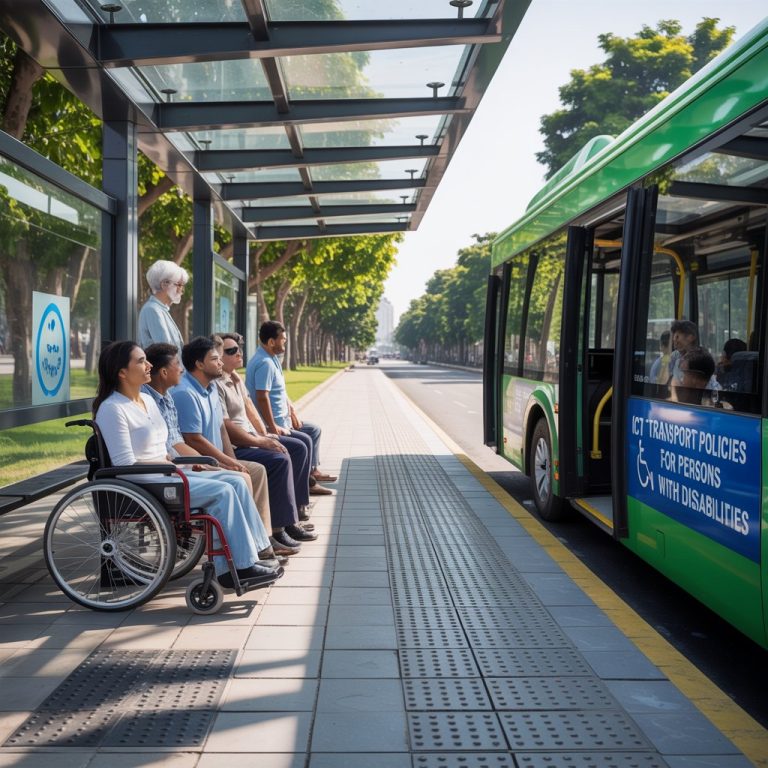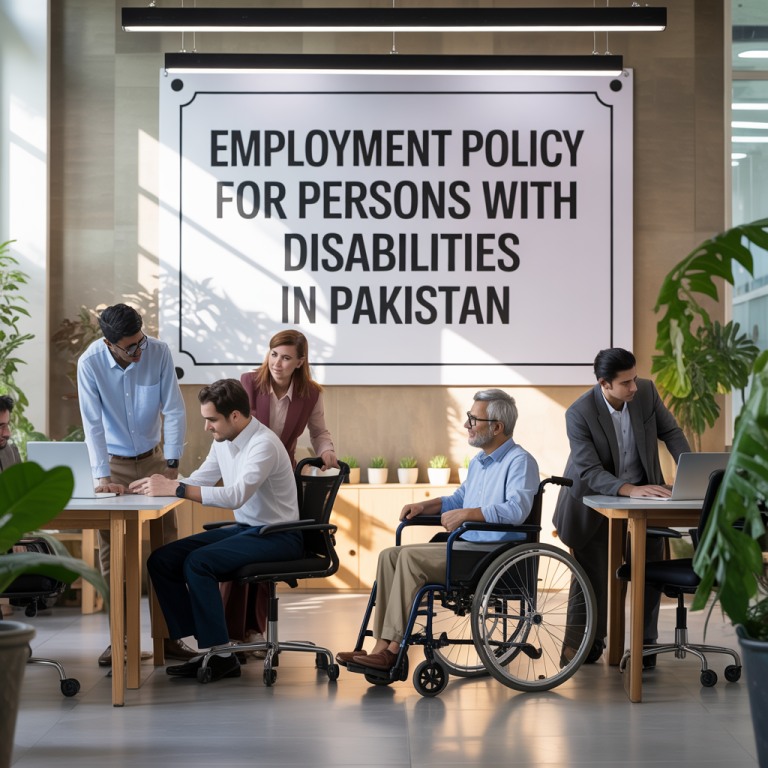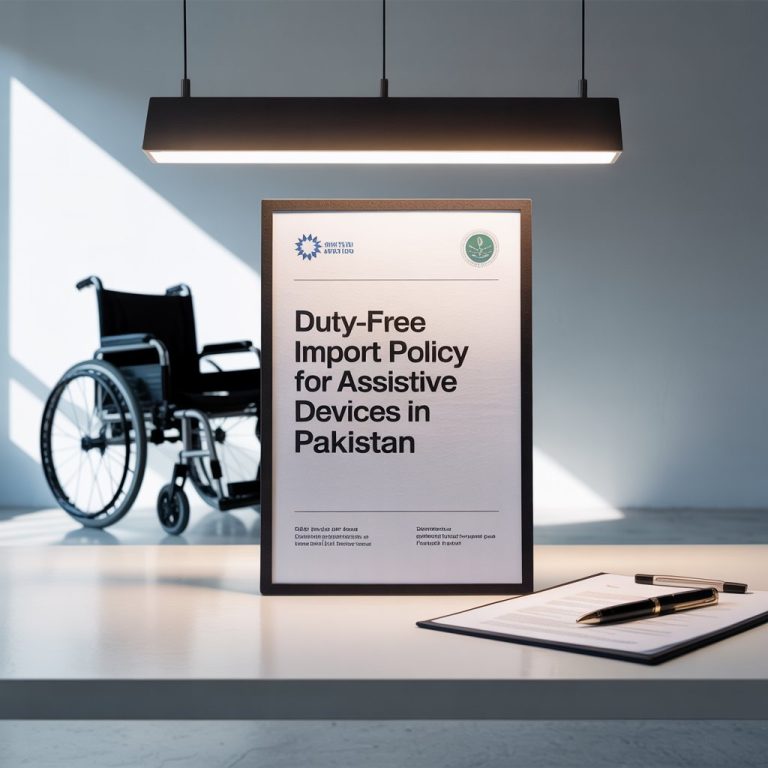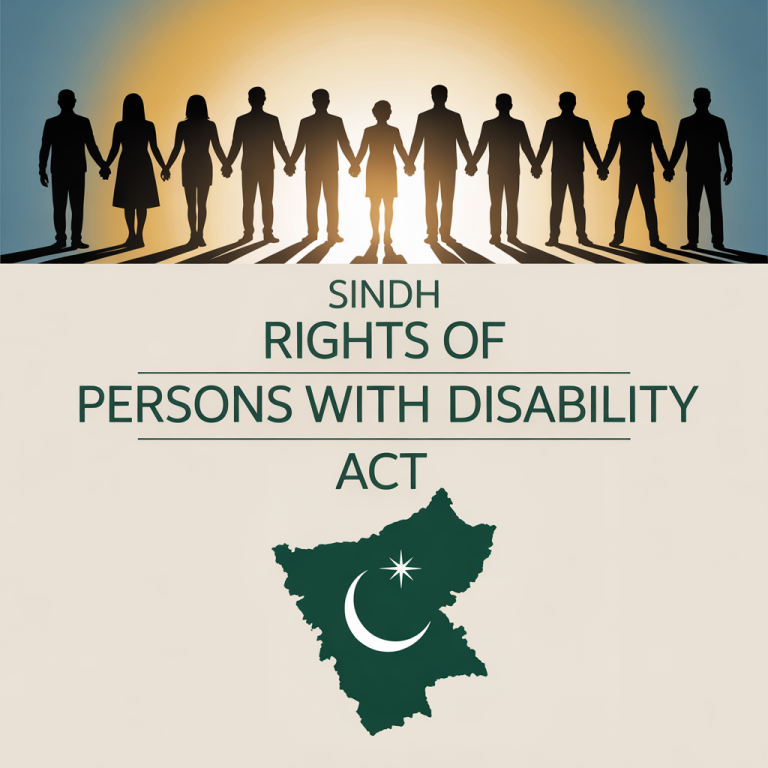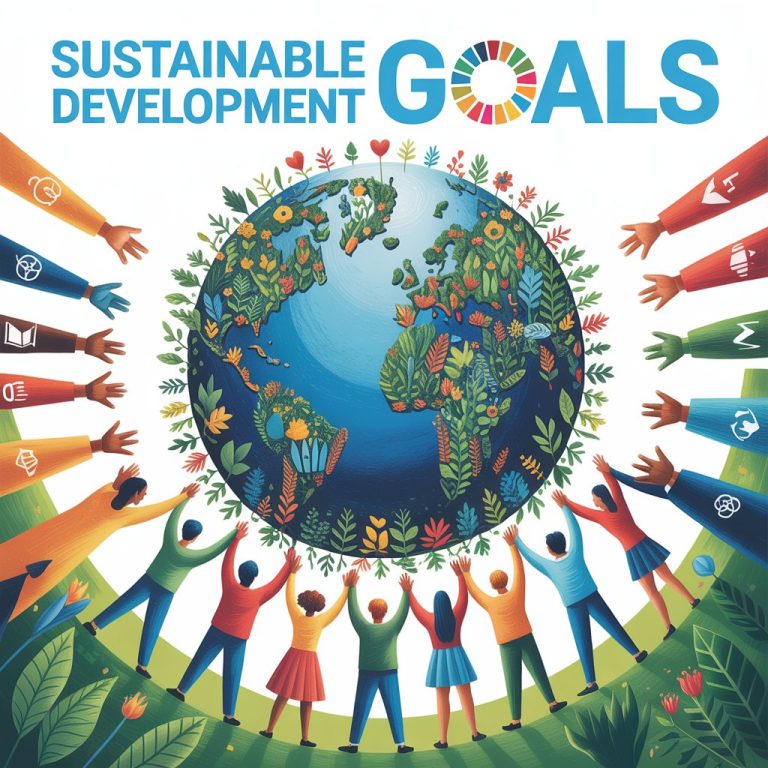Benazir Income Support Programme for Persons with Disabilities
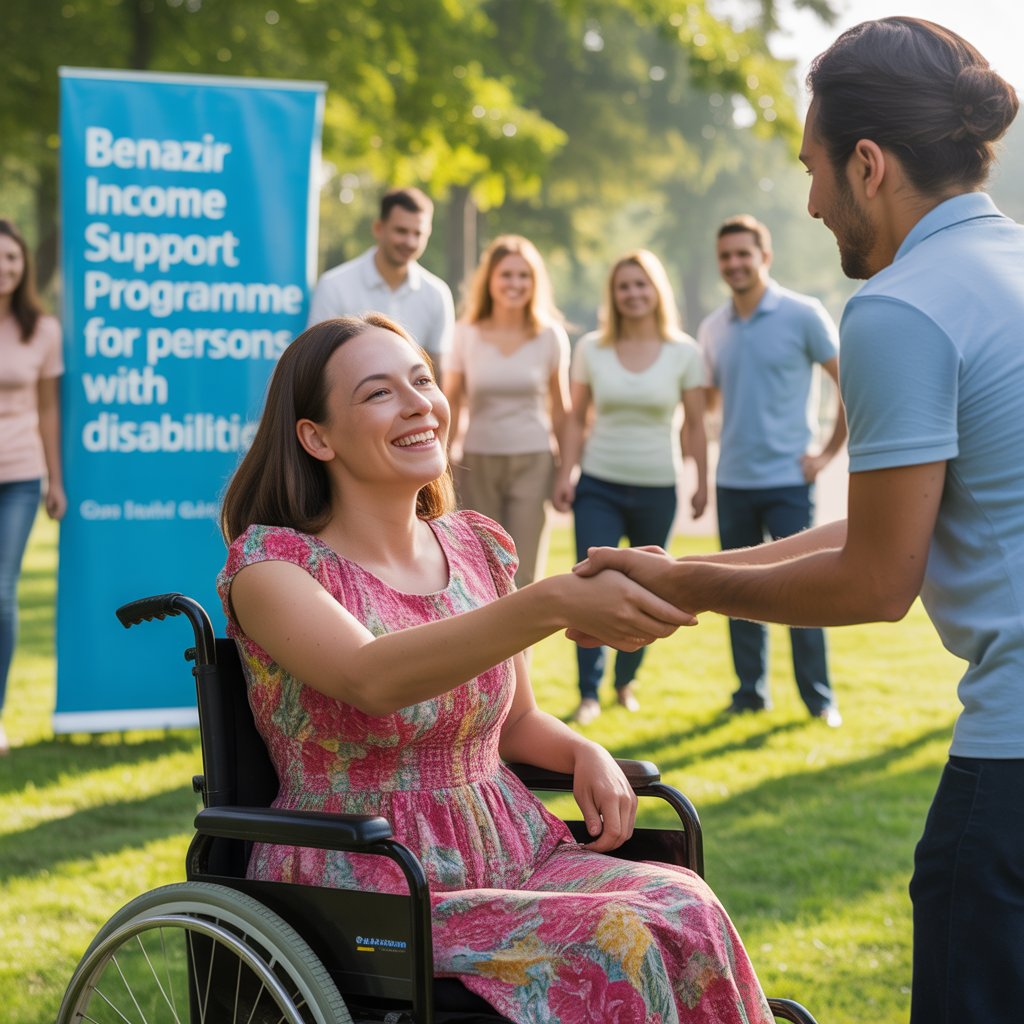
Poverty hits hardest where it hurts most: the marginalized. For persons with disabilities (PWDs) in Pakistan, structural exclusion—compounded by physical, social, and economic barriers—makes escaping poverty an uphill battle. That’s where the Benazir Income Support Programme (BISP) comes in. Under the Kafalat Program, BISP serves as a lifeline for millions, with persons with disabilities prioritized for unconditional cash transfers, simplified registration, and accessibility support.
This article explores how BISP acts as both a social safety net and a vehicle of dignity for Pakistan’s disabled community, highlighting the process, impact, and way forward.
Introduction to BISP and Its Vision
Launched in 2008, BISP is Pakistan’s flagship social protection initiative, aimed at alleviating poverty through direct cash transfers to low-income and vulnerable populations. As one of South Asia’s largest safety net programs, it aligns with:
- SDG 1: No Poverty
- SDG 10: Reduced Inequalities
- Pakistan’s constitutional guarantees of equality, welfare, and social justice
Over time, BISP evolved into a data-driven platform, and with the Ehsaas reforms, it adopted inclusive targeting approaches, especially toward persons with disabilities.
Overview of the Kafalat Program under BISP
The Kafalat Program provides:
- Unconditional cash assistance to eligible low-income families
- Bi-monthly or quarterly stipends delivered via bank accounts or digital wallets
- Special priority for women, widows, or PWDs
The average stipend (as of 2024) is Rs. 8,500 every quarter, distributed via partner banks, ATMs, and BISP centers across the country.
How BISP Supports Persons with Disabilities
BISP prioritizes persons with disabilities in multiple ways:
- Simplified registration via CNIC disability codes
- Fast-tracked inclusion in the National Socio-Economic Registry (NSER)
- Biometric exemption protocols for people with hand or fingerprint impairments
- Dedicated helplines and facilitation staff at BISP offices
This recognition of disability-based vulnerability is more than symbolic—it reflects in policy execution and outreach.
Eligibility Criteria for PWDs in BISP
To be eligible, persons with disabilities must:
- Possess a CNIC with a visible disability marker, issued by NADRA
- Fall below the poverty score threshold set in NSER surveys
- Be unemployed or not part of a formal pension or welfare scheme
- Be registered as part of a household flagged as poor in BISP’s dynamic registry
Disability Registration Through NADRA
Getting registered as a person with disability involves:
- Visiting a Disability Assessment Board at a DHQ or THQ hospital
- Receiving medical verification
- Updating CNIC status at NADRA
- Automatic linkage with BISP and other safety nets
Once flagged in the system, eligible PWDs are automatically considered for Kafalat.
The Role of Dynamic Survey and NSER
The National Socio-Economic Registry (NSER) dynamically updates data via:
- Door-to-door household surveys
- BISP registration desks
- SMS-based identification
Persons with disabilities are given priority flags in the database to ensure their eligibility is assessed faster.
Kafalat Stipend Amounts for PWDs
Qualified PWDs under BISP receive:
- Rs. 8,500 every three months (subject to change)
- Delivered via:
- Partner bank ATMs (HBL, Bank Alfalah)
- BISP Campsites
- Mobile wallets in remote areas
- In rural and hard-to-reach areas, BISP partners with retail agents or mobile vans for cash disbursement
Use of Biometric Verification for Access
Recognizing the challenges many PWDs face with biometric systems:
- Alternate verification is offered for those with finger deformities
- Elderly or disabled beneficiaries can nominate a caretaker under certain conditions
- NADRA and BISP have partnered to enable flexible e-KYC protocols
Special Facilitation at BISP Centers for PWDs
To ensure accessibility:
- Priority queues for PWDs at registration and disbursement centers
- Wheelchair access ramps
- Availability of seated counters
- Sign language staff (in some urban locations)
- Mobile facilitation units for those unable to travel
Grievance Redress and Complaint Mechanisms
If a PWD faces issues such as payment delays or registration errors, BISP offers:
- Toll-free helpline (0800-26477)
- Complaint registration desks at local Tehsil offices
- SMS alert systems
- Mobile teams in extreme hardship cases
Case Study: A Beneficiary with Disability
Rashid, a 28-year-old man with cerebral palsy in Turbat, Balochistan, was unable to work or travel. Through a BISP mobile unit, he was registered in the NSER and now receives quarterly stipends. These funds help him purchase medicine and support his caregiver—a small but critical change driven by inclusive policy in action.
Digital Inclusion in BISP for Accessibility
- SMS notifications in Urdu and regional languages
- Online portals for registration status
- Future plans include voice-enabled assistance bots and digital wallets that are screen-reader compatible
- Financial literacy materials tailored for PWDs and their families
COVID-19 and BISP’s Response for PWDs
During the pandemic:
- PWDs were prioritized under Ehsaas Emergency Cash Program
- Doorstep disbursement for those with mobility restrictions
- Masked, sanitized, and accessible facilitation points
- CNIC-linked emergency support activated without new paperwork
Impact of BISP on Livelihoods of PWDs
Positive impacts include:
- Reduced dependency on family members
- Improved access to medicines, nutrition, and personal mobility aids
- Restoration of dignity through direct access to funds
- A sense of inclusion and participation in national safety net systems
Collaboration with Provincial Disability Authorities
BISP works with:
- SEPDA in Sindh
- Punjab Social Protection Authority
- Khyber Pakhtunkhwa’s SEPWD
- Balochistan Disability Council
These linkages ensure cross-benefit alignment, including healthcare, employment, and assistive device distribution.
Donor and Development Partner Support
Organizations like:
- World Bank
- UNICEF
- Asian Development Bank
have co-financed capacity building and digitization for better inclusion of vulnerable groups, including PWDs, in BISP systems.
Challenges Faced by PWDs in Accessing BISP
- Limited awareness in rural and tribal districts
- Long travel distances to registration points
- Barriers for non-literate persons to fill forms or navigate ATMs
- Delays in disability certification at hospitals
Policy Recommendations for Enhancing Disability Inclusion in BISP
- Dedicated disability helpline
- Accessible complaint registration apps
- Training staff in disability etiquette
- Periodic disability audits in NSER data
- Sub-program for assistive device co-financing
Legal Backing and Policy Framework for BISP
BISP is grounded in:
- Article 38(d) of the Constitution (right to social security)
- UNCRPD Article 28 (adequate standard of living)
- National Policy for Persons with Disabilities 2021
- SDGs 1, 4, 8, and 10
Role of Women with Disabilities in BISP
Many female beneficiaries are:
- Heads of households
- Primary caregivers to disabled children or siblings
- Vulnerable to gender-based violence and income shocks
BISP’s female-focused targeting and PWD inclusion helps address dual vulnerabilities.
Integration with Other Safety Net Programs
Through the Ehsaas One-Window Program, BISP beneficiaries may access:
- Sehat cards (health insurance)
- Waseela-e-Taleem for school-age children with disabilities
- Interest-free loans and skill development programs
Stakeholder Involvement: DPOs and NGOs
Civil society supports BISP through:
- Awareness drives
- Assistance in registration
- Monitoring accessibility and reporting violations
Groups like NOWPDP, Milestone, and Handicap International have played a role in improving outreach.
Technology and Innovation for Inclusive BISP
BISP plans to:
- Use AI tools to analyze inclusion gaps
- Launch mobile apps for real-time grievance redress
- Pilot voice-enabled chatbots for illiterate or visually impaired users
Monitoring and Evaluation of Disability Inclusion in BISP
Metrics tracked include:
- Number of registered PWD beneficiaries
- Payment compliance rate
- Inclusion in dynamic registry
- Grievance resolution speed
Future of BISP for Persons with Disabilities
Plans include:
- Expanding cash amounts based on cost-of-living metrics
- Disability inclusion dashboards
- Integration of assistive device vouchers
- More inclusive disbursement models (e.g., mobile vans, at-home delivery)
Conclusion: BISP as a Lifeline for Disability-Inclusive Development
The Benazir Income Support Programme is more than financial aid—it’s a dignity-restoring platform that recognizes and supports Pakistan’s most vulnerable citizens. By prioritizing persons with disabilities through data, accessibility, and design, BISP moves toward a just, inclusive, and empowered society. But as the system grows, so must its accountability, outreach, and innovation.
Because social protection is not just a right—it’s a responsibility.
FAQs
How do persons with disabilities apply for BISP support?
Through NADRA disability CNIC registration and enrollment in BISP’s NSER survey.
Is biometric verification mandatory for PWDs?
No. Alternate methods are provided for those with physical limitations.
What amount does a PWD receive under BISP?
As of 2024, Rs. 8,500 every quarter, subject to future updates.
Can women with disabilities receive BISP separately?
Yes, if they meet the eligibility criteria individually.
What if my registration is delayed or rejected?
You can contact the BISP helpline or visit the nearest Tehsil facilitation center for review.
